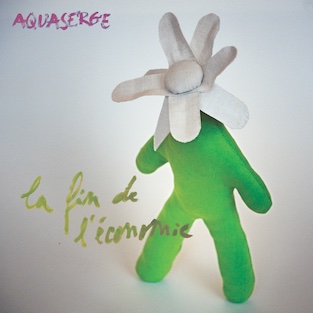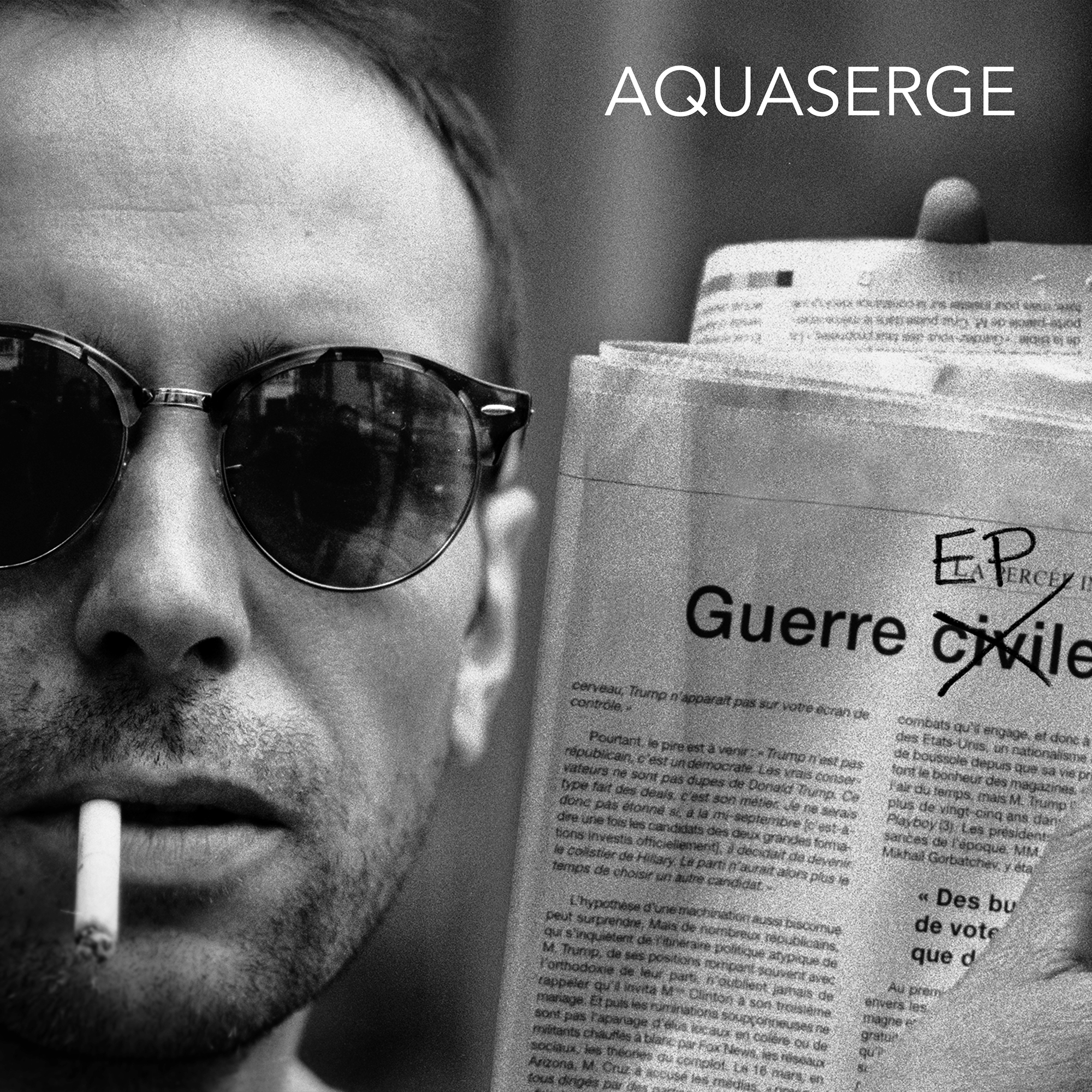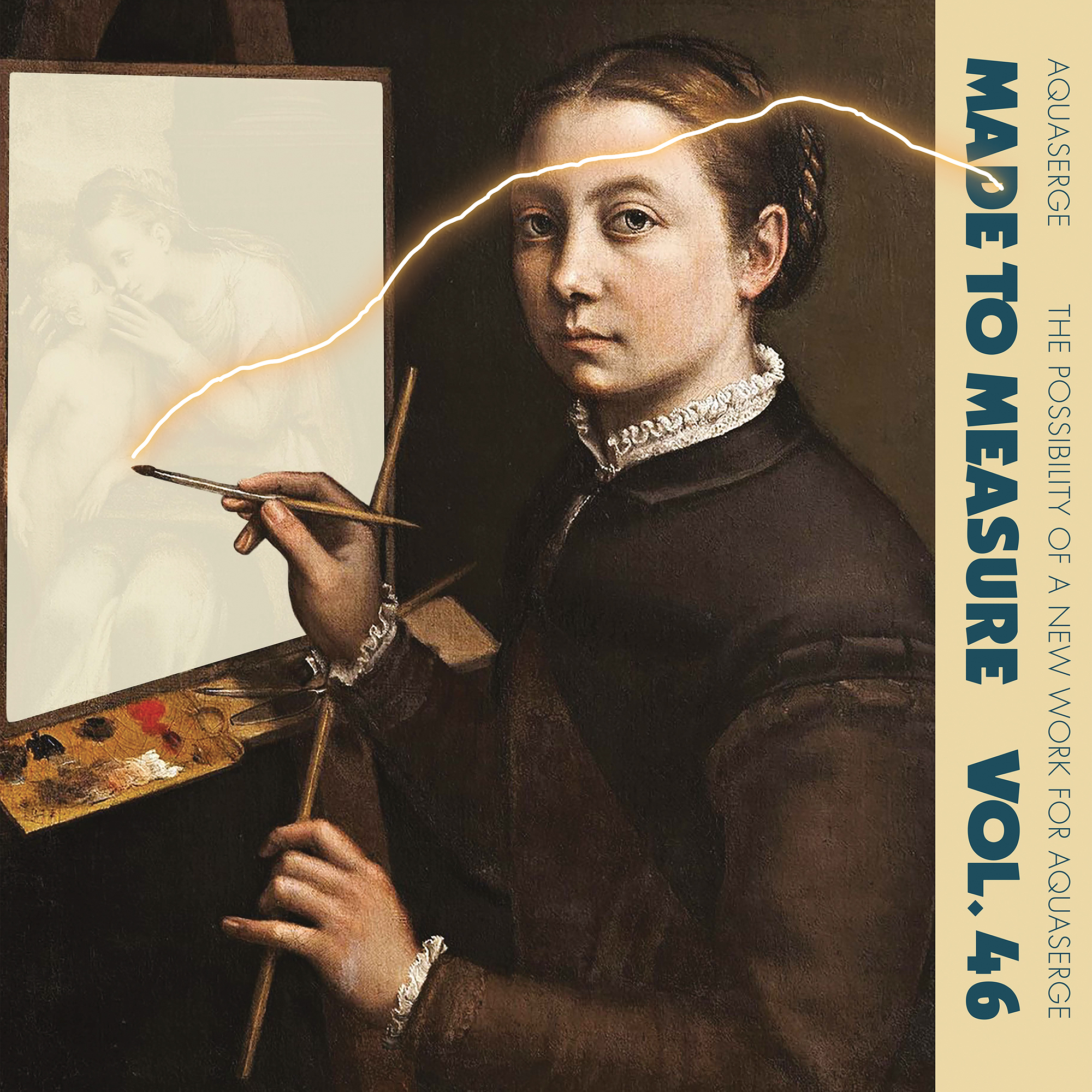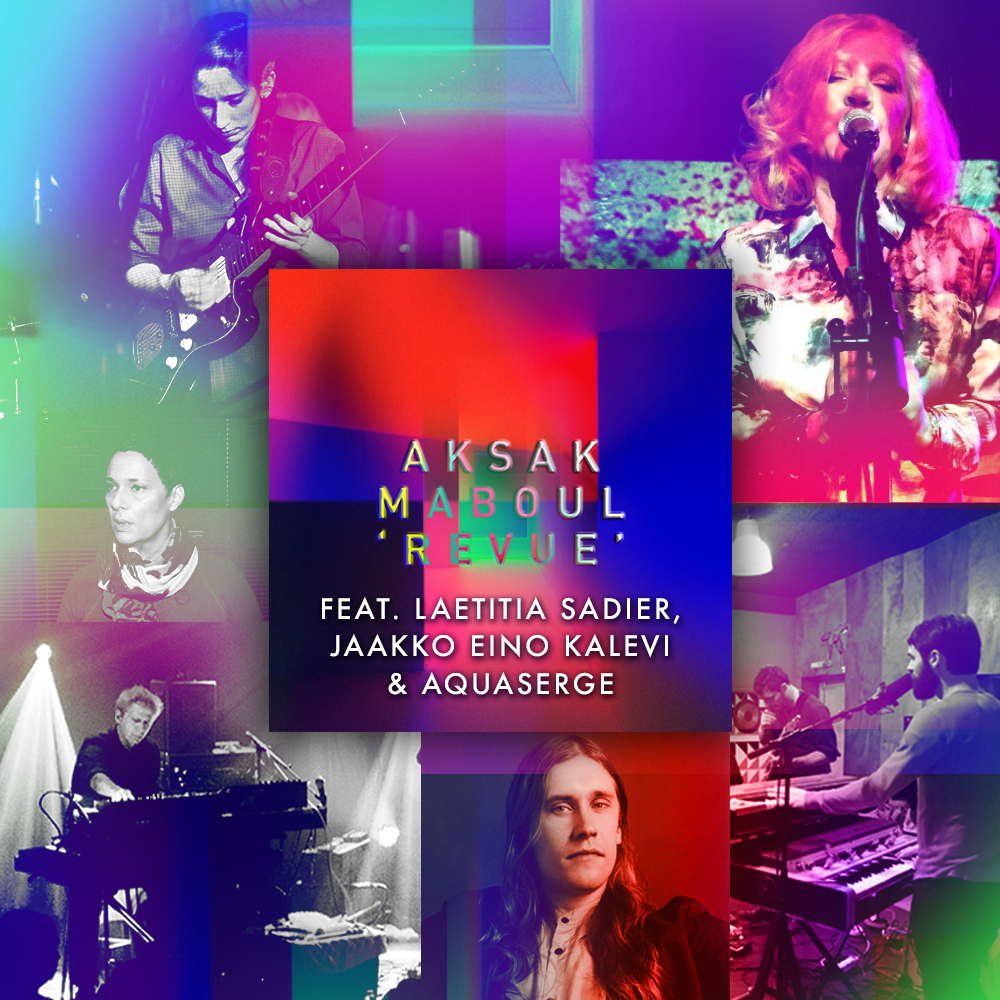
Long story short:
Coded messages, anadiplosis and automatic writing, dance music grooves peppered with rhythmical & metrical twists, shades of Italian or French film music, a dense political & poetic subtext: such are the ingredients of Laisse ça être, the new album by brilliant experimental pop band AQUASERGE.
Aquaserge has been a subterranean driving force in the international music scene, inspiring and influencing countless musicians & fans. Originally based in a farmhouse-cum-recording studio in the countryside near Toulouse, France, they operated for several years like a kind of nebula, a shifting aggregate drawing over 60 musicians in its orbit, while knitting an extended web of connections by collaborating with the likes of Tame Impala, Stereolab, Melody’s Echo Chamber, Acid Mothers Temple and Aksak Maboul, the band has now distilled down to a strong 5-piece core, which is wildly creative in the studio, powerful and exciting on the stage.
Short story long:
Since around the making of their previous album A l’amitié (released in 2014 on Chambre404/Arista), the Aquaserge whirlpool has become a steady 5-piece band comprising Benjamin Glibert (guitar & vocals), Julien Gasc (keys & vocals), Audrey Ginestet (bass & vocals), Manon Glibert (clarinets), and drummers Julien Chamla and/or Julien Barbagallo.
Augmented by horn players Sebastien Cirotteau (trumpet) and Olivier Kelchtermans (saxes), this core quintet locked themselves in a studio for three 10-day sessions, and proceeded to collectively write new music from scratch. This was collective composition at its most spectacular. Contrasting with some of their earlier abstract and more complex works, this time the band started from dance music grooves (afro beat, tango, funk, waltz, samba and beats with inflections ranging from Caribbean to krautrock-ish). They set out to create “as-yet-uncharted dances” (to quote a line from the lyrics for the song “Les yeux fermés”).
Quite expectedly, they couldn’t help injecting some rhythmical & metrical twists in those dance grooves… and then proceeded to build harmonic & melodic developments on the fly, often resulting in arrangements with shades of Italian & French film music, and mustering elements from the countless sources from which Aquaserge have been drawing to create their polymorphous sound (from psych pop, free jazz, noise, to the most adventurous side of ‘60s/’70s rock: kraut to Canterbury to ZNR et al). Several of the songs were recorded in one take, with everyone (including the horns) playing together, while some others involved elaborate editing. Just like Aquaserge’s early releases, this album was entirely engineered, mixed and produced by the band. Also worth noting that, this time around, vocal duties were shared by four of the band members.
In the band’s creative process, the lyrics generally emerge at the end, when the pieces are already constructed. Which isn’t to say that they’re the least important element: tackling the lyrics opens a new phase of collective improvisation. Aquaserge love playing with words and they’re very good at it. Though these dimensions may be less obvious to non-French speakers, it may be interesting to explain, for example, that the lyrics for Tintin on est bien mon loulou are modelled on the children’s rhyme known as “marabout, bout de ficelle…”, i.e. the rhetorical figure called anadiplosis: each sentence begins by a word which sounds identical to the last word in the preceding sentence.
To craft their lyrics, Aquaserge often used techniques such as automatic writing (as favoured by the Surrealists). C’est pas tout mais sounds like the monologue of a guy who opens a door and accidentally finds himself lost in the middle of a track… yet the text was first improvised by four of the band members, then edited and chopped up to create this effect.
L’ire est au rendez-vous is another fascinating exercise: the title comes from one of the first coded messages used by the French Resistance, who broadcast them via the BBC as signals for triggering clandestine actions (most famously just prior to the Normandy landings). Aquaserge wrote a series of sentences describing the state of things in today’s France/Europe/World (the rise of populist, racist, right-wing movements, the all-pervading commodification of everything, the ravages of speculation-driven economy)… and proceeded to translate them into obscure, poetical lines, as if they were bottled messages sent to whoever is intent on resisting.
There’s definitely a political subtext running through Aquaserge’s work, and the title of the album might possibly be an encouragement to be autonomous, to let things follow their course on a macro level, while ‘acting local’ and pursuing one’s own productive activities on a micro level. This attitude may be reflected in the enigmatic mantra-like phrase which closes the album: “Je garde un œil fermé quand j’ai les yeux ouverts. Je garde un œil ouvert quand j’ai les yeux fermés” (I keep one eye open when my eyes are closed. I keep one eye shut when my eyes are open).
So what on earth does “Laisse ça être” exactly mean? “Laisse” is “let”… “ça” is “”that” or “it”… And “être” means “being” or “be”… Aside from the autonomist motto described above, the phrase is clearly reminiscent of the title of a famous album which started out as a film project. As it happens, the making of this Aquaserge album was also closely connected to a cinematic endeavour: before becoming a respected documentarist, filmmaker Guillaume Bordier had also lived for a while in the Aquaserge farmhouse-cum-recording studio. He used the opportunity of this new album recording to work on a film which tries to probe into the mysteries of collective artistic creation: how does a group consisting of such different individuals manage to combine their respective personalities and invent music together? All the recording sessions were documented, and will result in a movie provisionally entitled “Un Film d’Aquaserge”.
Learning about the processes involved in creating this Aquaserge album is fascinating, but it’s the outcome which counts in the end… and the result is magnificent: while sticking to relatively simple structures, the band have managed to unleash their most maximalist inclinations and have created a brilliant piece of work. “Laisse ça être” is joyful, groovy, energetic, both rough and sophisticated, bursting with ideas and surprises.
“Laisse ça être” will be released at the end of January 2017 by Almost Musique (France) and Crammed Discs (rest of the world). Several music videos are in the making, and will be made public in the upcoming weeks.
Aquaserge is a phenomenally impressive live band (and have performed at events as wildly diverse as the Liverpool Psych Fest, R.I.O. Festival, Faust’s Klangbad or select Paris club Le Silencio). They will be touring throughout 2017 to present the music of “Laisse ça être” around Europe.













